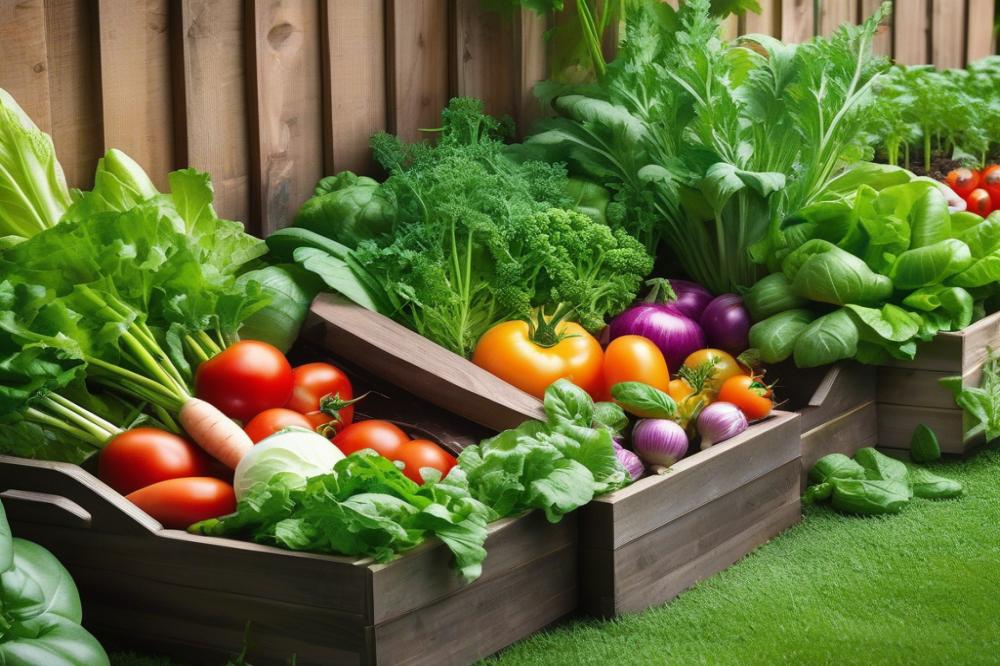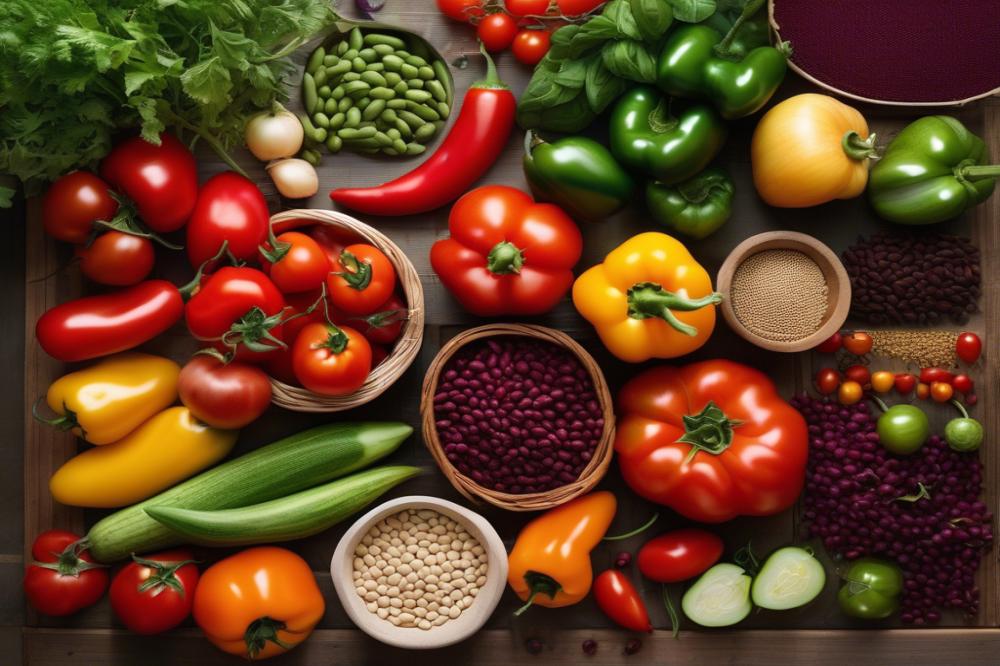Introduction
Growing tomatoes has become a popular hobby, especially among those with limited outdoor space. patio tomatoes are an excellent choice for small gardens, often yielding delicious fruit in compact sizes. Many urban gardeners seek out container gardening solutions. These options make vegetable growing accessible and rewarding, even when traditional gardening is not feasible.
Benefits abound when cultivating tomatoes in pots. container gardening allows for flexibility in placement. Sunlight, water, and nutrients can be managed effectively, leading to healthy plants. Potted tomatoes are less susceptible to soil-borne diseases, making them an excellent option for home gardening enthusiasts. They also provide an opportunity to grow organic tomatoes for those interested in healthy eating.
Selecting the right variety is crucial for success in any gardening endeavor. Not every tomato variety thrives in limited space. Choosing smaller, bush-like types ensures that gardeners can enjoy robust harvests without crowding. small space gardening requires thoughtful planning, and right varieties can maximize the yield. Embracing these gardening tips will enhance the experience and results, making growing tomatoes a joyful project.
Choosing the Right patio tomatoes


Best Varieties for Container Gardening
Look for compact varieties that thrive in potted environments. Popular options include ‘Tiny Tim’, ‘Patio Princess’, and ‘Bush Early Girl’. These types produce tasty fruit without needing a lot of space. They are bred specifically for small garden ideas. Opting for these will make your urban gardening experience fruitful.
Characteristics of Patio Tomatoes vs. Traditional Varieties
Patio tomatoes are generally smaller in size and height compared to traditional ones. This makes them ideal for container gardening since they fit well in pots or small spaces. Fruit from these plants often matures faster. Larger varieties can take weeks longer to produce ripe tomatoes. A significant advantage of growing smaller plants is their ability to focus energy on fruit production rather than excessive foliage.
Factors to Consider When Selecting Seeds or Seedlings
Think about your location and climate before making a choice. Some tomato varieties handle heat better, while others prefer cooler conditions. Check online resources or gardening centers for native options. Organic tomatoes can be a great choice if you’re focused on healthier gardening practices. Take note of the plant’s growth habit too. Varieties with a determinate growth pattern are usually better for potted tomatoes. They grow to a certain size and stop, which minimizes the need for staking or elaborate tomato care.
Choosing the right seeds or seedlings will greatly influence your home gardening success. Make sure the variety fits well with your lifestyle and space. Consider your commitment to care and maintenance. Some varieties are simply easier to grow than others.
Essential Gardening Tips for Patio Tomatoes


Optimal Sunlight Requirements for Healthy Growth
Tomatoes thrive in bright light. Full sun is best. Aim for at least six hours of direct sunlight each day. This exposure helps the plant produce more fruit. In urban gardening, finding the right spot can be challenging. Look for areas where shadows from buildings or trees won’t block the sun. A south-facing balcony or terrace often works well. Remember, less sunlight can lead to weaker plants and fewer tomatoes.
Tips on Soil Selection and Preparation
Soil quality plays a crucial role in tomato care. Start with a high-quality potting mix designed for container gardening. Look for a blend that drains well yet retains moisture. It’s also helpful to mix in organic compost. This will add nutrients to the soil. Consider testing the pH level; tomatoes prefer slightly acidic soil. After filling the containers, loosen the soil to encourage root growth.
Importance of Drainage in Containers for Potted Tomatoes
Containers need proper drainage to keep plants healthy. Without it, roots may rot, leading to dead plants. Choose pots with drainage holes at the bottom. Using clay pots is a smart idea, as they often provide better airflow. Add rocks or broken pottery to the bottom of your container. This helps improve drainage even further. Always check that excess water can escape. Standing water can ruin your efforts in vegetable growing. You want vibrant and robust potted tomatoes, so adequate drainage is key.
Watering and Nutritional Needs


When it comes to watering, finding the right balance is critical for growing tomatoes in container gardening. Soil should be consistently moist but never waterlogged. A good rule of thumb is to water deeply once every few days. However, during hot weather, you might need to check daily. Pot depth can also affect watering habits. Shallower pots may need more frequent irrigation.
Understanding the needs for fertilization can make a big difference in tomato care. Start with a quality potting mix that has added nutrients. Regularly using a balanced fertilizer can help your plants thrive. Organic options, like compost or fish emulsion, provide a slow release of nutrients. Look for fertilizers that are specifically designed for vegetables. Nutrient availability is key to robust growth and fruit production.
Growing organic tomatoes not only tastes better but also promotes sustainability. Using natural fertilizers reduces chemical runoff and protects beneficial insects. Native pollinators thrive better in an environment with organic practices and minimal chemicals. It’s important to integrate sustainable practices into your home gardening routine, even in a small garden setup.
Urban gardening can be rewarding when you follow a few simple gardening tips. Observe for signs of nutrient deficiencies, such as yellowing leaves or stunted growth. Adjust your fertilization schedule if these issues arise. Additionally, consider companion planting if space allows. Some plants can help enhance the growth of tomatoes, benefiting everyone involved.
Ultimately, providing the right care in terms of watering and nutrition leads to a satisfying vegetable growing experience. Remember to check your potted tomatoes frequently. A little attention goes a long way towards achieving great results even in the tightest spaces.
Space-Saving Gardening Techniques
Urban gardening can be a fun and creative way to grow potted tomatoes. Limited space doesn’t have to stop you from enjoying fresh produce. By using vertical gardening methods, you can maximize your plant yield while keeping your small area neat and tidy. Hanging plants or wall-mounted planters can transform blank spaces into vibrant green spots.
Vertical Gardening Methods for Urban Gardening
Consider a vertical structure for your tomato care. This technique allows you to grow upwards instead of outwards. Plants will enjoy plenty of sunlight as they climb. An adjustable system can engage your plants as they mature. Living walls or stacked planters can also provide a unique touch to any home gardening project. Your options will be exciting, even with minimal square footage.
Using Trellises and Cages for Efficient Growing
Trellises and cages are essential tools for space-saving gardening. They provide critical support for climbing vegetable growing plants while helping to keep everything organized. Ensuring your plants are upright reduces disease risk and allows for better air circulation. Many options are available, such as wooden stakes, wire mesh, or even repurposed materials. It’s all about what works best in your small garden ideas.
Companion Planting Ideas to Maximize Small Garden Spaces
Companion planting can greatly enhance productivity in a limited area. Some plants naturally support others. For example, planting marigolds alongside your tomatoes can help deter pests. Mixing different vegetables makes the most of your gardening space. Herbs like basil and parsley not only thrive but also complement the taste of organic tomatoes. These relationships can lead to healthier plants and a more diverse harvest.
Troubleshooting Common Issues
Identifying and Dealing with Pests and Diseases
Pests can quickly become a nightmare for any gardener, even in small spaces. Common pests like aphids, whiteflies, and spider mites often target potted tomatoes. It’s important to inspect your plants regularly. Look for sticky residues or tiny webs as signs of these intruders. Handpicking pests can be effective. If the problem persists, consider using insecticidal soap, which is safe for organic tomatoes.
Fungal diseases, such as powdery mildew and blight, might also affect your plants. Monitoring leaves for signs of discoloration or spots is crucial. If you notice these symptoms, removing affected leaves can prevent further spread. Moreover, providing proper air circulation around your garden is essential. Avoid overcrowding your potted tomatoes to maintain healthy growth.
Tips for Maintaining Plant Health in Small Garden Environments
Healthy plants begin with good soil. Choose a quality potting mix rich in nutrients. Regularly feeding your tomatoes with organic fertilizers can boost their growth and yield. Keep your plants hydrated but avoid overwatering. Containers can dry out quickly in hot weather. Using a moisture meter can help you determine when to water.
Mulching around the base of the plant can help retain moisture and suppress weeds. It also adds nutrients back into the soil as it breaks down. Practicing crop rotation is another excellent way to improve soil quality. If you plan to grow different vegetables in the same container or area, alternate your crops each season.
Seasonal Care and Preparation for Patio Tomatoes
Spring is the perfect time for starting patio tomatoes. Begin by choosing disease-resistant varieties. As summer approaches, be mindful of heat stress. Tomatoes may wilt if temperatures soar. Providing shade during the hottest part of the day can help.
In the autumn, focus on harvesting your crop. Gather tomatoes before frost sets in. Green tomatoes can be ripened indoors if necessary. Preparing your containers for winter is vital. Cleaning them to prevent diseases from lingering is a crucial step for next year’s garden. Consider using pots that are easy to move and store.
By keeping these tips in mind, it’s possible to troubleshoot common issues when engaging in container gardening. Small spaces can still yield a bounty of delicious tomatoes with the right care and attention.
Wrapping Up Your Gardening Adventure
Growing fresh tomatoes in small spaces offers many advantages. It provides an opportunity to enjoy homegrown produce without needing a large garden. Container gardening allows even those with tiny balconies or patios to successfully cultivate delicious fruits right at their doorstep. The joy of harvesting these homegrown gems cannot be overstated, especially when you can pick them at their peak ripeness.
Trying your hand at this form of gardening can lead to remarkable results. Invest a little time, and you’ll soon reap the benefits of your hard work. Tomato care is essential, but it can be simple. Basic watering techniques and good soil choices make a significant difference. Those moments spent nurturing your plants are rewarding in more ways than one.
Ultimately, home gardening is about experiencing the satisfaction of growing your food. Those small successes, like pulling ripe tomatoes off the vine, bring a sense of achievement. Consider taking a chance with container gardening. Embrace the beauty of watching your efforts bloom into a harvest of your own. Every little step adds to the joy of growing your vegetables. Enjoy the process, and you may find yourself inspired to grow even more in the future.



